Have you ever eaten ‘Kuzumochi’?
Kuzumochi is Japanese traditinal sweets that you can eat everywhere in Japan, but Nara is famous for the place that Kuzumochi was originated and there are many cafe and restraunts.
So if you visit Nara, give it try Nara’s Kuzumochi!
What is Kuzumochi?
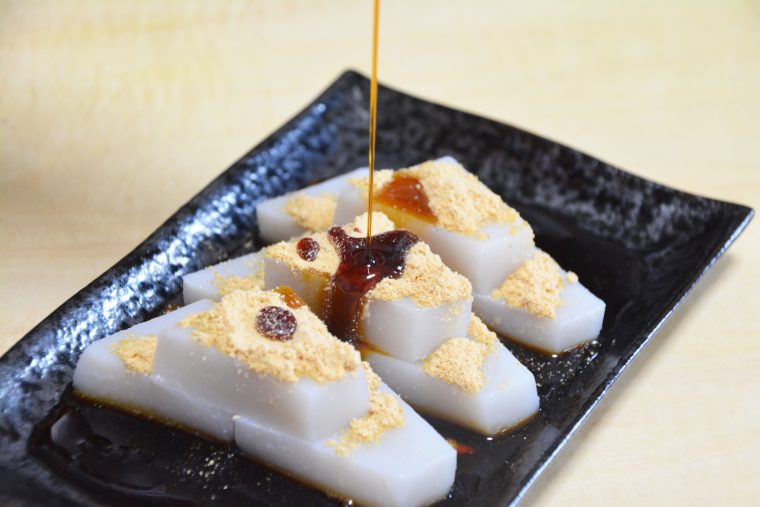
Kuzumochi is a clear, soft, and chewy rice cake made from kuzu (kudzu) flour.
Kuzu, the raw material of kuzu flour, is a perennial plant of the legume family, widely distributed throughout Japan from Hokkaido in the north to Kyushu in the south.
The name “kuzu” is said to have come from the kuzusubito, mountain people who lived in the Yoshino region of Nara Prefecture, who made kuzu flour from kuzu and sold it.
Kuzu is a natural food made by repeatedly refining the starch contained in kuzu root using only groundwater in midwinter and drying it for two to three months, and contains no additives.
Thus, kuzu flour made from 100% kuzu starch is called “Yoshino-honkuzu.
The process of exposing the kuzu to cold water several times during the severe winter is called the Yoshino zarashi method, a traditional method that has been used since the Edo period.
The cold weather and high-quality water in the Yoshino region of Nara Prefecture produce high-quality kuzu flour.
Kuzu flour is widely used for cooking and sweets such as sesame tofu, kuzu yu, kuzu manju, kuzu kiri, and thickening of dishes, in addition to “kuzu mochi” (kuzu rice cakes).
- Main areas of transmission
All over Prefecture
- Main ingredients
Yoshino honkuzu, sugar, water, soybean flour, molasses, etc.
- Occasions and seasons of eating and learning
It is eaten throughout the year, regardless of the time of year.
- Efforts for preservation and transmission
(Outline of those who have passed down the tradition, preservation groups, use of SNS, modern efforts such as commercialization, etc.)
Kuzu is available at specialty stores and antenna stores. Other sweets using kuzu, such as ice cream with kuzu mochi, shaved ice, and zenzai with kuzu, are also available.
- What is the difference between Kuzumochi and Warabi Mochi?
The biggest difference between Kuzumochi and Warabi Mochi is the ingredients used.
Although similar in texture and taste, Kuzumochi made with kuzu (kudzu) flour is translucent, whereas Warabi Mochi made with straw flour is darker in color.
Also, kuzumochi in the Kanto region looks and tastes quite different from these two, perhaps because kuzumochi in the Kanto region uses wheat starch, which is a fermented food.
Let’s learn the difference between Kuzumochi and Warabi Mochi
It is difficult to tell the difference between Kuzumochi and Warabi Mochi, perhaps because they look and taste similar, but the ingredients are different, and if you taste them consciously, you will see that there are slight differences in color, flavor, and texture.
In addition, kuzumochi from the Kanto region and kuzumochi from the Kansai region are made from different ingredients, and there are considerable differences in both appearance and taste.
It may be a good idea to taste each of these three different types of wagashi and enjoy them while discovering the differences between them, as this will further deepen your understanding of wagashi.
How to eat and drink
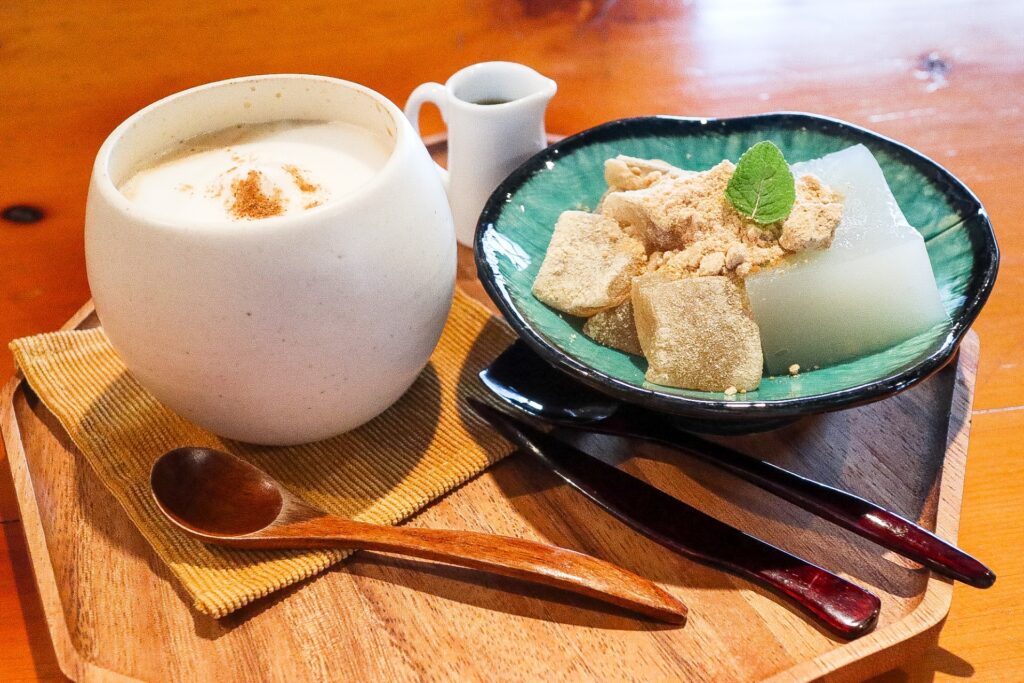
Drizzle kinako (soybean flour) or molasses on top of the kuzumochi to your liking.
The elasticity of kuzumochi stands out when it is cooled down, but if you eat it when it is still slightly warm inside, you can enjoy the sticky and fluffy texture of kuzumochi.
Let’s try making Kuzumochi at home!
Preparation Method
Put Yoshino honkuzu, sugar, and water in a saucepan, dissolve well, and heat over high heat.
Stir until all the ingredients become transparent.
Put into a small bowl.
Cool under running water and remove from container.
Place on a plate and pour kinako (soybean flour) and molasses over the top.
Effects of Kuzumochi
Kuzuyu, used in wind medicines, is healthy
Kuzu mochi is a food that is extremely good for the body, just as the “kuzu root” is used in the famous “kuzuneyu” cold remedy.
Research has shown that it contains trace elements such as daidzein, a type of isoflavone, and puerarin, which also helps lower cholesterol.
Effect to improve allergic diseases?
In addition, Paracasei lactobacillus also has the effect of improving allergic diseases by enhancing the immune system.
Speaking of allergies, there are many Japanese who suffer from hay fever.
Of course, eating Kuzu Mochi once does not mean that you will feel dramatic effects.
It is important to consume it little by little every day.
Kuzu rice cake is low in calories, so it is safe to eat it every day.
Those who want to keep their youthfulness and beauty forever.
Those who want to improve painful allergy symptoms.
Kuzumochi contributes to beauty
Why don’t you change your daily snack to Kuzumochi and aim to improve your constitution while having fun?
One serving (100 g) of Kuzumochi has 93 kcal and 22.5 g of sugar.
Kuzumochi is a fermented food made by fermenting flour starch and contains lactic acid bacteria.
Lactobacilli have a bowel-regulating effect and are expected to improve bowel movements, prevent swelling, and boost immunity.
Kuzumochi contains a large amount of carbohydrates, so it is advisable to set a daily portion and do not eat too much.
Where to have Kuzumochi
- Popular shop of Kuzumochi “Yoshinohonguzu Tengokudo Nara Honten”
The location is just a few minutes walk from Nara Park, convenient to walk to after a walk in the park.
It is very close to the Nara Prefectural Police Headquarters.
The general appearance is very chic and stylish, with a calm taste using wood and painted in black.
The store is divided into two floors, the first and second, with takeout items displayed on the first floor.
The specialty of “Yoshinohonguzu Tengokudo Nara Honten” is the kuzumochi made from Yoshinohonguzu.
The kuzumochi, which is made using traditional methods, is completely different from the mochi you can find elsewhere.
Kuzu used to be inexpensive, but nowadays it is very expensive due to the difficulty of production.
Summary
Kuzumochi is delicious and good for health, so we recommend to have it in Nara! If you like it, you can try cooking at home too.
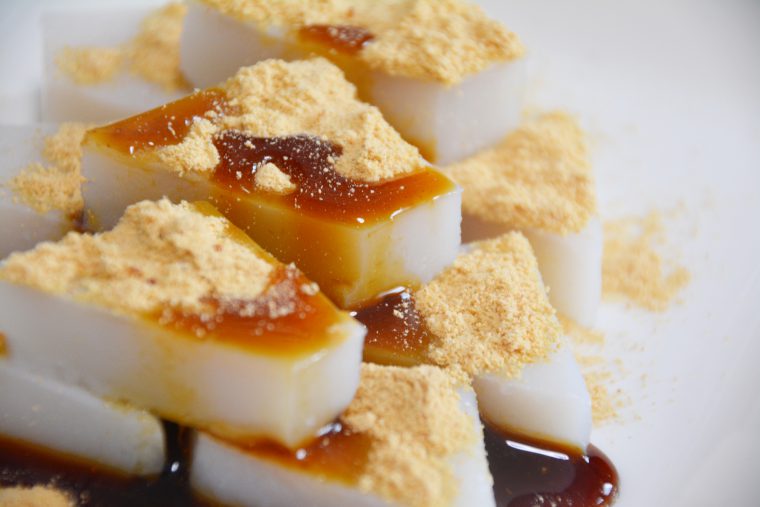

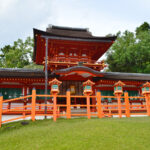
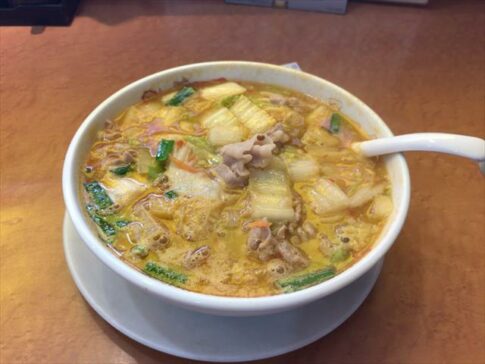
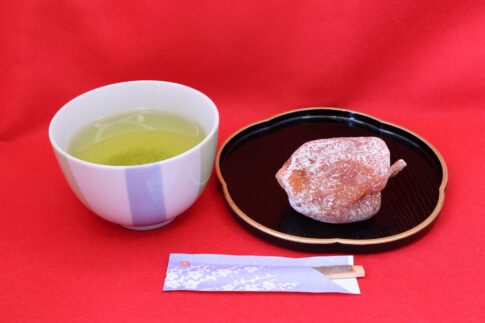
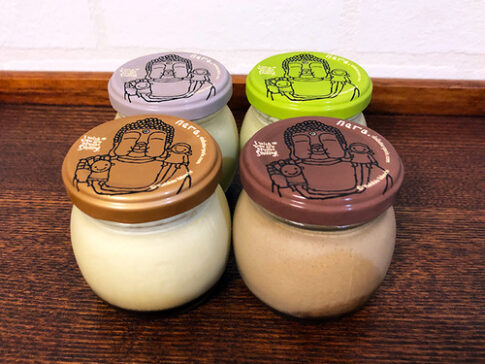
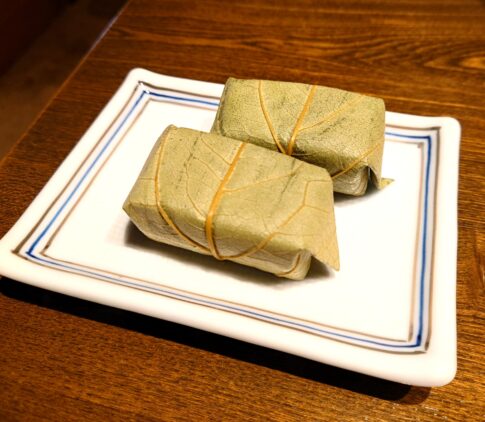

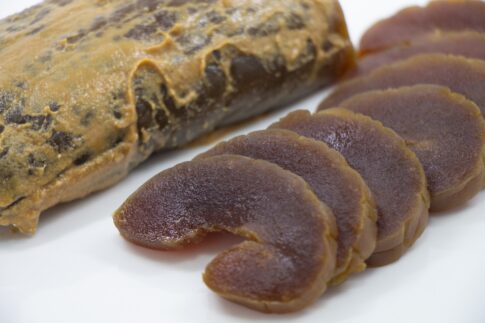
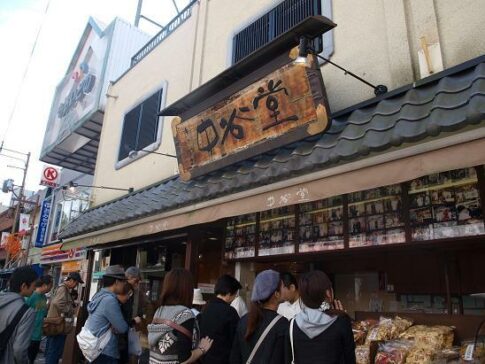
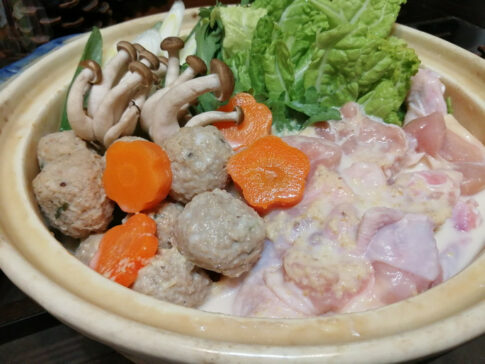

Ingredients (4 servings)
Yoshino kuzu 80g
sugar 4 teaspoons
water 400ml
molasses a little to taste
soybean flour Appropriate amount